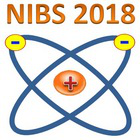Speaker
Prof.
Katsuyoshi Tsumori
(National Institute for Fusion Science)
Description
The consumption rate of caesium (Cs) for negative hydrogen (H-) ion source increases when the source operation gas is changed from hydrogen to deuterium. A clear indication that a deuterium discharge erodes Cs atoms on the surface to increase work function, and thus, co-extracted electron current. We have proposed a model that the enhanced sputtering yield of Cs from the plasma grid (PG) due to deuterium ions, which carries more kinetic energy to Cs adsorbed on the surface directly or indirectly, is the main reason for this fast dissipation of Cs.
Introduction of helium (He) into discharge can verify the enhanced sputtering effect due to heavier ions in ion source discharge. Comparing the effect due to seeded Cs before and after the He injection into discharge through Cs OES signals as well as the H- density measured with cavity ring-down method, the sputtering/evaporation enhancement due to He is estimated. Neutral atoms and positive ions in the He discharge should cause enhanced sputtering like deuterium, while the system does not generate neutron under the induction of acceleration voltage to diagnose the extracted negative ion beam. Plasma parameters of the H2 and He plasmas will be investigated by diagnostics tools installed on NIFS-RNIS (National Institute for Fusion Science, Research and development Negative Ion Source) together with cavity ring down. Enhanced consumption rate of Cs will be compared with proposed sputtering yield data to predict the rate for deuterium operation of negative ion sources.
Primary author
Prof.
Katsuyoshi Tsumori
(National Institute for Fusion Science)
Co-authors
Dr
Haruhisa Nakano
(National Institute for Fusion Science)
Dr
Katsunori Ikeda
(National Institute for Fusion Science)
Dr
Kenichi Nagaoka
(National Institute for Fusion Science)
Prof.
Masaki Osakabe
(National Institute for Fusion Science)
Dr
Masashi Kisaki
(National Institute for Fusion Science)
Prof.
Motoi Wada
(Doshisha University)
Dr
Shuji Kamio
(National Institute for Fusion Science)
Mr
Yasuaki Haba
(Nagoya University)
Dr
Yutaka Fujiwara
(National Institute for Fusion Science)

